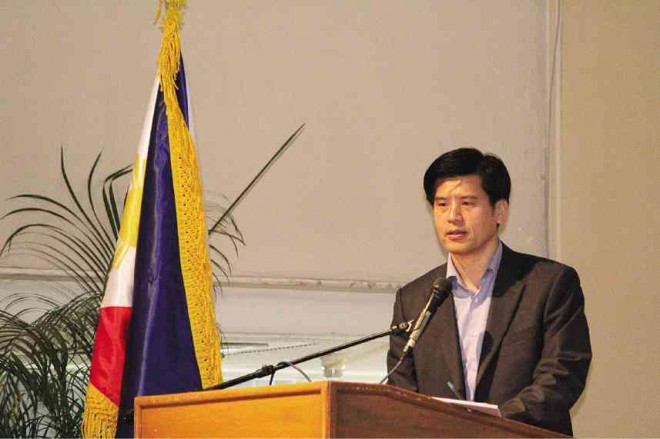The South Korean Embassy in Manila wants the Korean language taught in state institutions to make Filipinos proficient in the language and improve their chances of employment in Korean firms.
South Korean Cultural Attaché in the Philippines Oh Choong-suk said the embassy was discussing with the Department of Education the possibility of including Korean language classes in Philippine high schools.
Oh said the embassy was also looking to partner with the Technical Education and Skills Development Authority (Tesda), the state vocational training agency, for the inclusion of Korean in its training programs to enhance the employability in Korea of its graduates.
“I’d like to recommend that the Philippine government start Korean language training in middle school, in high school, so that the students can have many travel opportunities, work as tour guides [for Koreans in the Philippines],” Oh said.
“We are planning [to partner with Tesda]. Many Filipinos want to go to Korea to work,” he said.
South Korean Embassy officials said there was a “great demand for Filipino workers” in their country but the Philippines fell short of the yearly employment quota because of the language requirement.
Min Kyong-ho, minister and consul general at the embassy, said about 6,000 Filipinos flew to South Korea for employment last year, less than the quota of 10,000. In 2012, about 5,000, half the annual quota, made it.
Oh said the embassy was also working with the Philippine Tourism Authority (PTA) to conduct Korean language training among Filipino tour guides so they could be hired to serve the continuing influx of Korean tourists here.
In 2013, 1.17 million Koreans visited the Philippines, accounting for a quarter of the total foreign tourist arrivals here. The figure also represents a 13-percent increase in Korean tourist arrivals.
“There are many Korean visitors,” Oh said, “…but most of the tour guides [in the Philippines] are Koreans, not Filipinos, because Filipinos cannot speak Korean well.”
He said, “So the president of the PTA asked me if the PTA and the Korean Cultural Center could [develop a language] class to give Filipinos a chance to serve as tour guides for Koreans.”
There are an estimated 50,000 Filipinos in Korea, including some 15,000 workers.
